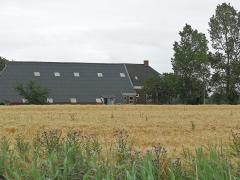Exploring resource efficiency for energy, land and phosphorus use: Implications for resource scarcity and the global environment
In this paper, we present four model-based scenarios exploring the potential for resource efficiency for energy, land and phosphorus use, and implications for resource depletion, climate change and biodiversity. The scenarios explored include technological improvements as well as structural changes in production systems and lifestyle changes.
Many of such changes have long lead times, requiring up front and timely investments in infrastructure, innovative incentive structures and education. For simulating the scenarios we applied the IMAGE modelling framework, with a time horizon until 2050.
Large potential for more efficient resource use
Our findings confirm a large potential for more efficient resource use: our (no new policies) baseline scenario shows a global increase, between 2010 and 2050, by 80% of primary energy use, 4% of arable land and 40% of phosphorus fertilisers. These numbers are reduced to +25% (primary energy), -9% (arable land) and +9% (phosphorus) in the global resource efficiency scenario.
Baseline developments and resource efficiency opportunities vary strikingly among regions, resources and sectors. Phosphorus use, for example, is expected to increase most on croplands in developing countries, whereas the largest potential for phosphorus use efficiency lies in the livestock sector and urban sewage treatment in industrialised countries.
Authors
Specifications
- Publication title
- Exploring resource efficiency for energy, land and phosphorus use: Implications for resource scarcity and the global environment
- Publication date
- 28 November 2015
- Publication type
- Publication
- Magazine
- Global Environmental Change 36 (2016) 21-34
- Product number
- 2319




